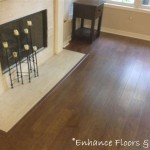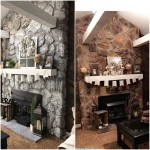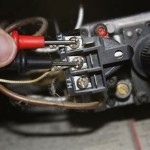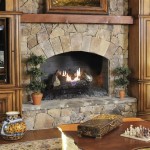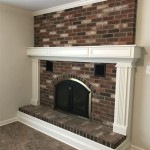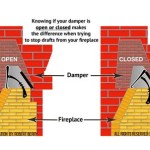Replacement Glass For Fireplace Insert
A fireplace insert is a self-contained heating appliance designed to be installed within an existing fireplace opening. These inserts drastically improve the heating efficiency of a traditional fireplace, reducing heat loss up the chimney and providing a more controlled and consistent heat output. A key component of many fireplace inserts is the glass panel that encloses the firebox. This glass allows for viewing of the flames while simultaneously containing the fire and preventing sparks or embers from escaping into the room. Over time, this glass can become damaged due to various factors, necessitating a replacement. Understanding the types of glass used, the reasons for replacement, and the process involved is crucial for maintaining the functionality and safety of a fireplace insert.
The glass used in fireplace inserts is specifically designed to withstand the high temperatures generated by the fire. Regular glass used in windows or doors is not suitable for this purpose as it would shatter under such conditions. Common types of glass used are ceramic glass and tempered glass. Ceramic glass, such as Neoceram or Pyroceram, is the most frequently used in higher-end inserts and wood stoves. It has a very low coefficient of thermal expansion, meaning it can endure rapid temperature changes without cracking. Tempered glass, while more affordable, is generally found in less demanding applications or older fireplace inserts. While stronger than regular glass, it is not as resistant to thermal shock as ceramic glass and may be more prone to breakage.
Reasons for Replacing Fireplace Insert Glass
Several situations might require the replacement of the glass in a fireplace insert. The most obvious and common reason is physical damage, such as cracks or shattering. Impacts from logs, accidental drops, or rapid temperature fluctuations can all cause the glass to break. Even small cracks can compromise the integrity of the glass, making it unsafe to operate the fireplace insert. A cracked glass panel allows carbon monoxide to leak into the living space, posing a serious health risk. Furthermore, it reduces the efficiency of the insert, as drafts can enter and disrupt the combustion process.
Another reason for replacement is clouding or discoloration of the glass. Over time, the glass can become stained with soot, creosote, or other deposits from the burning fuel. While regular cleaning can help, persistent stains may eventually become impossible to remove, significantly obstructing the view of the flames. Severely clouded glass not only detracts from the aesthetic appeal of the fireplace but also reduces the amount of radiant heat that can pass through the glass into the room.
Finally, deterioration of the gasket surrounding the glass can also lead to the need for glass replacement. The gasket seals the glass panel to the firebox, preventing air leaks and maintaining a proper seal. If the gasket becomes brittle, cracked, or otherwise damaged, it can no longer effectively seal the glass. This can cause air to leak into the firebox, affecting the combustion process. In some cases, a failing gasket can also put undue stress on the glass itself, increasing the risk of cracking or shattering. Replacing the glass and the gasket simultaneously is often recommended to ensure a proper and lasting seal.
Identifying the Correct Replacement Glass
Before attempting to replace the glass in a fireplace insert, it is crucial to identify the correct glass type and dimensions. The first step is to consult the owner's manual for the fireplace insert. The manual should specify the type of glass required and the exact dimensions. If the manual is not available, the next step is to carefully measure the existing glass panel. It is important to measure the width, height, and thickness of the glass to ensure a proper fit. Use a precise measuring tool and record the measurements accurately. Note any specific features, such as rounded corners or mounting holes, that may be present.
Once the dimensions are known, it is essential to determine the type of glass needed. As previously mentioned, ceramic glass is generally preferred for its superior thermal resistance. However, some older fireplace inserts may use tempered glass. If unsure, consult a qualified fireplace technician or a specialist in fireplace glass replacement. They can examine the existing glass and advise on the appropriate replacement type. Trying to use the wrong type of glass can be dangerous and may void the warranty on the fireplace insert.
When ordering the replacement glass, it is important to specify all the relevant information, including the type of glass, dimensions, and any special features. Providing the make and model of the fireplace insert can also help ensure that the correct glass is supplied. Purchase the replacement glass from a reputable supplier that specializes in fireplace parts and accessories. This will help ensure that the glass meets the required safety standards and is suitable for use in a fireplace insert.
The Replacement Process
Replacing the glass in a fireplace insert is a relatively straightforward process, but it requires caution and attention to detail. Before starting, ensure that the fireplace insert is completely cool and disconnected from any power source. Gather the necessary tools, including a screwdriver, a putty knife or scraper, a wire brush, and safety glasses. It is also recommended to wear gloves to protect the hands from sharp edges and debris.
The first step is to remove the existing glass panel. This typically involves removing the screws or clips that hold the glass in place. Be careful not to strip the screws or damage the surrounding metal framework. Once the screws are removed, gently pry the glass away from the firebox. If the glass is stuck, use a putty knife or scraper to carefully loosen the gasket around the edges. Be prepared for soot and debris to fall out as the glass is removed.
After removing the glass, thoroughly clean the firebox opening and the surrounding metal framework. Use a wire brush to remove any remaining soot, creosote, or gasket material. Inspect the metal framework for any signs of damage or corrosion. If necessary, repair or replace any damaged components before installing the new glass. Install the new gasket around the perimeter of the glass panel. The gasket should be properly sized to ensure a tight seal. Carefully position the glass panel into the firebox opening and secure it with the screws or clips. Tighten the screws evenly to prevent stress on the glass. Once the glass is securely in place, inspect the seal to ensure that there are no gaps or leaks. If necessary, re-tighten the screws or adjust the gasket to achieve a proper seal. After completing the replacement, allow the fireplace insert to cool down completely before using it.

Fireplace And Wood Burning Stove Glass Replacement

Wood Stove Glass Replacement Free One Day

Woodpro Ws 1500 Stove Door Replacement Glass For Wood Fireplace

Fireplace Replacement Glass Marion And Mirror

Fireplace Replacement Glass For Prefab Doors Parts

Replacement Ceramic Glass For Wood Stoves Custom Size Rockford Chimney

Fireplace Replacement Glass For Prefab Doors Parts

Fireplace And Wood Burning Stove Glass Replacement

Standard Size Masonry Fireplace Doors Fixed Frame

Regency Door Glass Replacement 846 302 304 308 940 416 P 366
Related Posts

